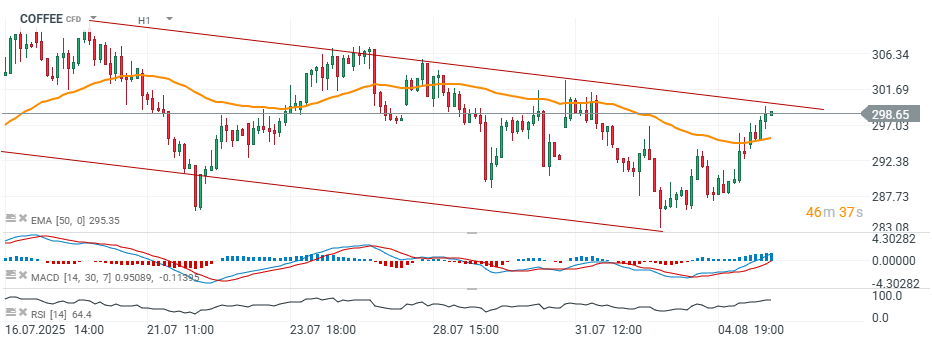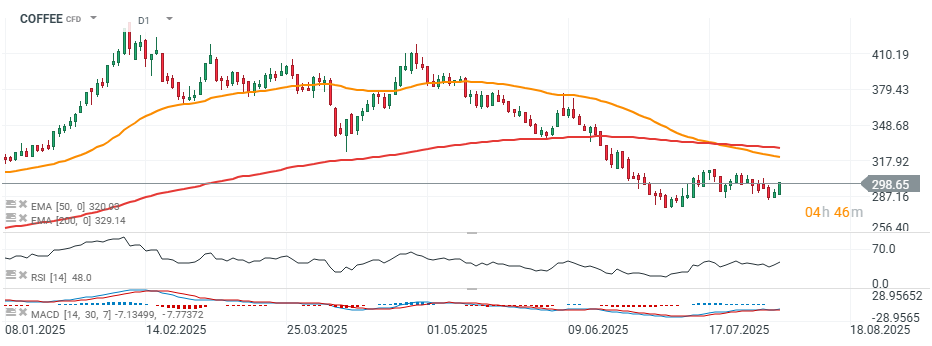After a weak session at the end of last week, ICE coffee futures (COFFEE) have begun an upward move, climbing to the highest levels in a week. The 50% tariff on Brazilian imports, announced by former President Trump, will include coffee and is set to take effect on August 6, 2025. This is the primary catalyst behind the sharp rebound following recent declines. Additional support comes from adverse weather conditions in Brazil’s key coffee-growing region, Minas Gerais
- On Friday, August 1, Arabica futures in New York dropped by nearly 4.5%, mainly due to the near-completion of Brazil’s coffee harvest—90% of the total crop had already been collected. Markets rebounded strongly on Monday, driven by the tariff news and the expansion of Brazilian coffee exports to China.
- China's decision to open its market may serve as compensation for Brazil and could act as a long-term bullish catalyst. Should U.S. demand weaken, it might be offset by increased exports to Asia. Notably, China has authorized 183 Brazilian companies to export coffee to the country over the next five years.
- This move significantly expands Brazil’s access to one of the fastest-growing (but still nascent) coffee markets globally. China's per capita consumption currently stands at just 16 cups per year, compared to the global average of 240 cups.
- Weather developments also remain a non-negligible factor. Last week, Minas Gerais received only 31% of normal rainfall, and late July saw severe hailstorms that affected approximately 1,500 hectares of coffee plantations. While this represents just 0.2% of the region’s total acreage, it has nonetheless added stress to an already tight global supply chain.
If the U.S. tariffs are implemented, American roasters may be forced to seek alternative sources—Colombia, Africa, or Asia. The problem? Limited inventories and constrained supply. According to analysts at Pine Agronegócios, without a viable substitute for the 7–8 million bags of Brazilian coffee imported annually by the U.S., the mainstream coffee blend market could face serious disruption. Moreover, the tight spread between September and December contracts on the ICE suggests growing interest in immediate delivery. Some speculate that a portion of Europe’s ICE-certified stocks may eventually be redirected to the U.S. market.
Coffee Price Chart (H1, D1)


Source: xStation5
Daily summary: Markets hold breath before Fed, silver rallies above 60 USD (09.12.2025)
Paramount Throws Down the Gauntlet to Netflix in the Battle for Warner Bros Discovery!
Silver nears $60 per ounce 📈
Wheat almost 1% ahead of the US WADE report 🔎Russia puts pressure on prices


